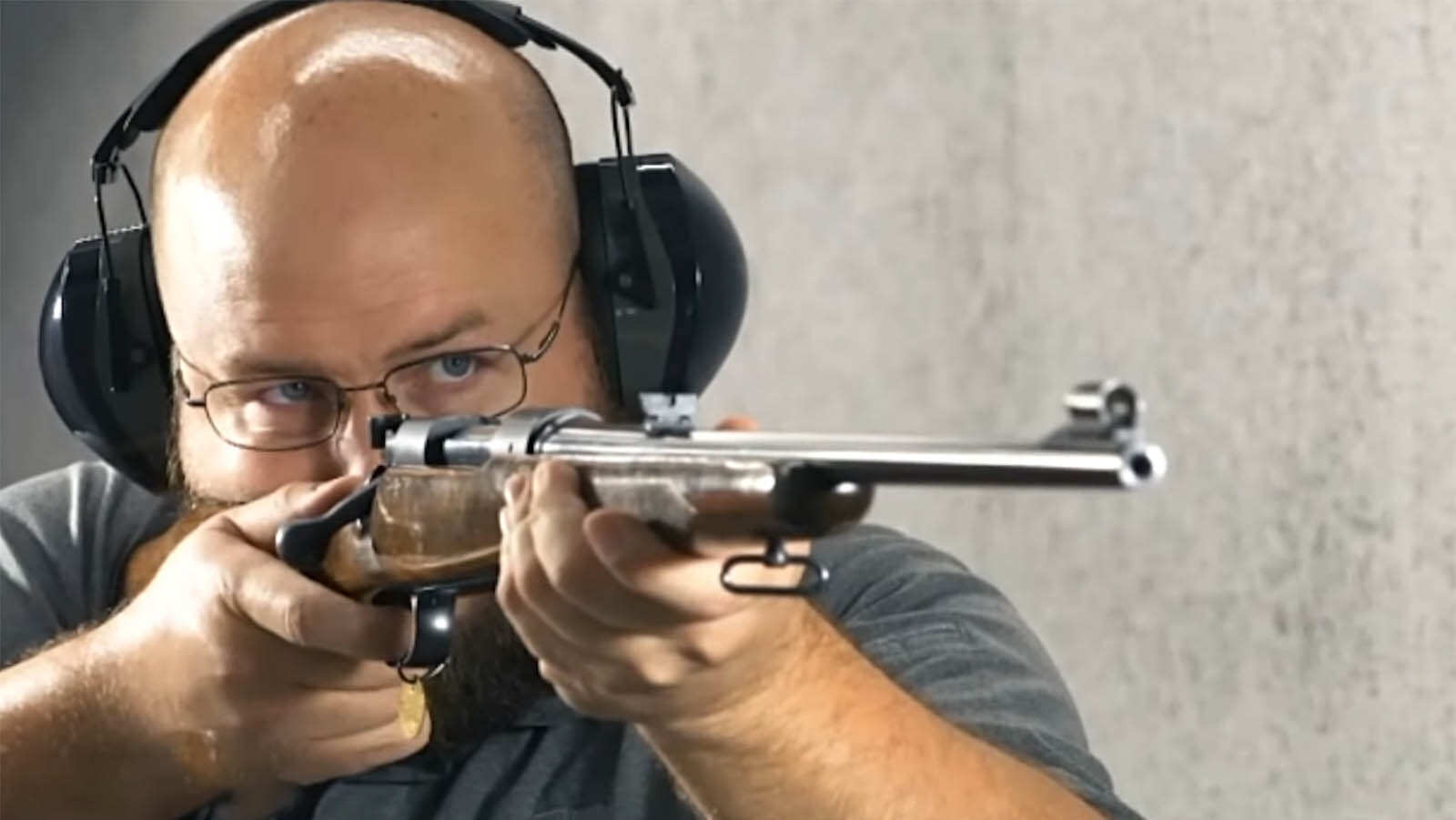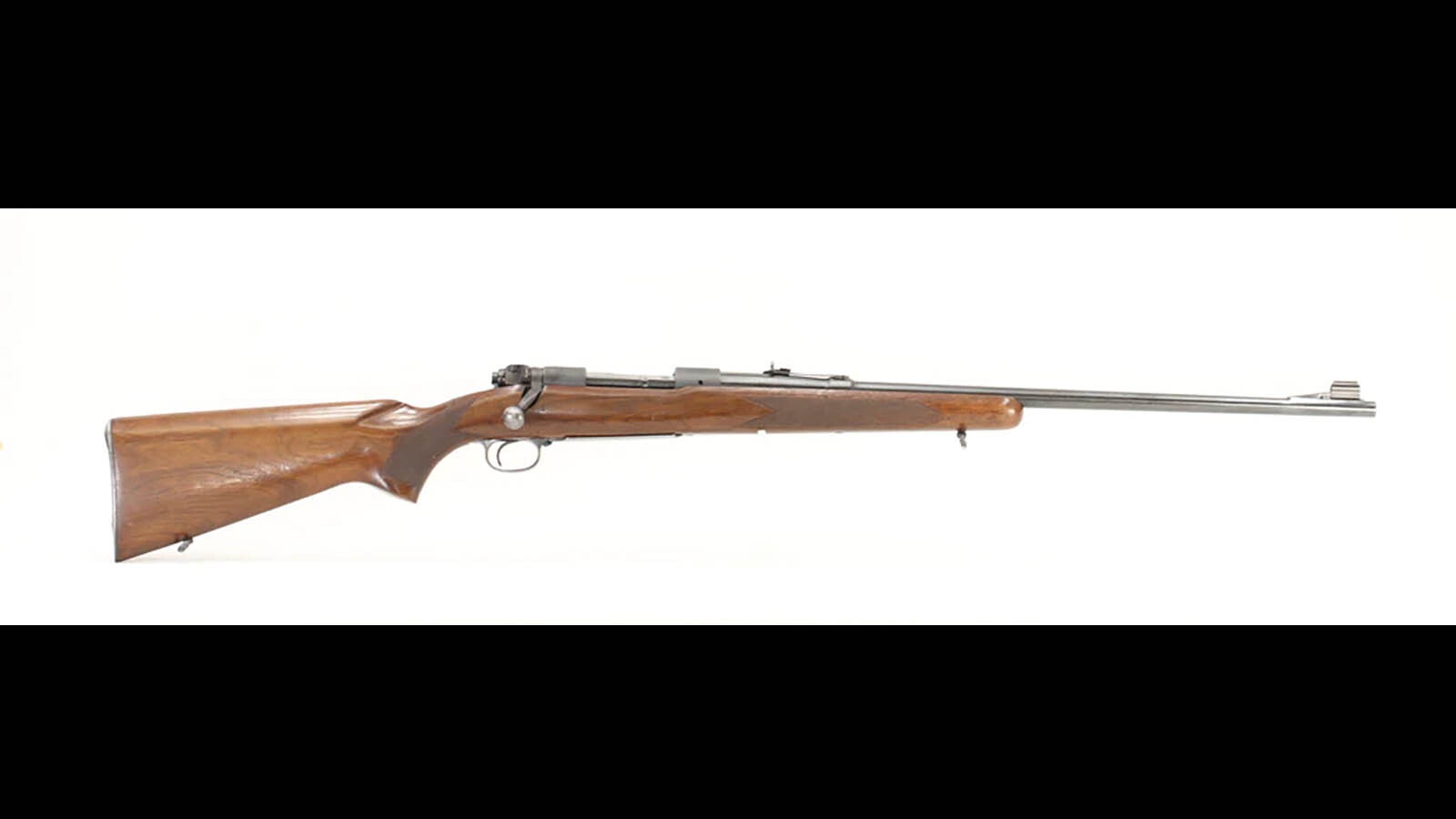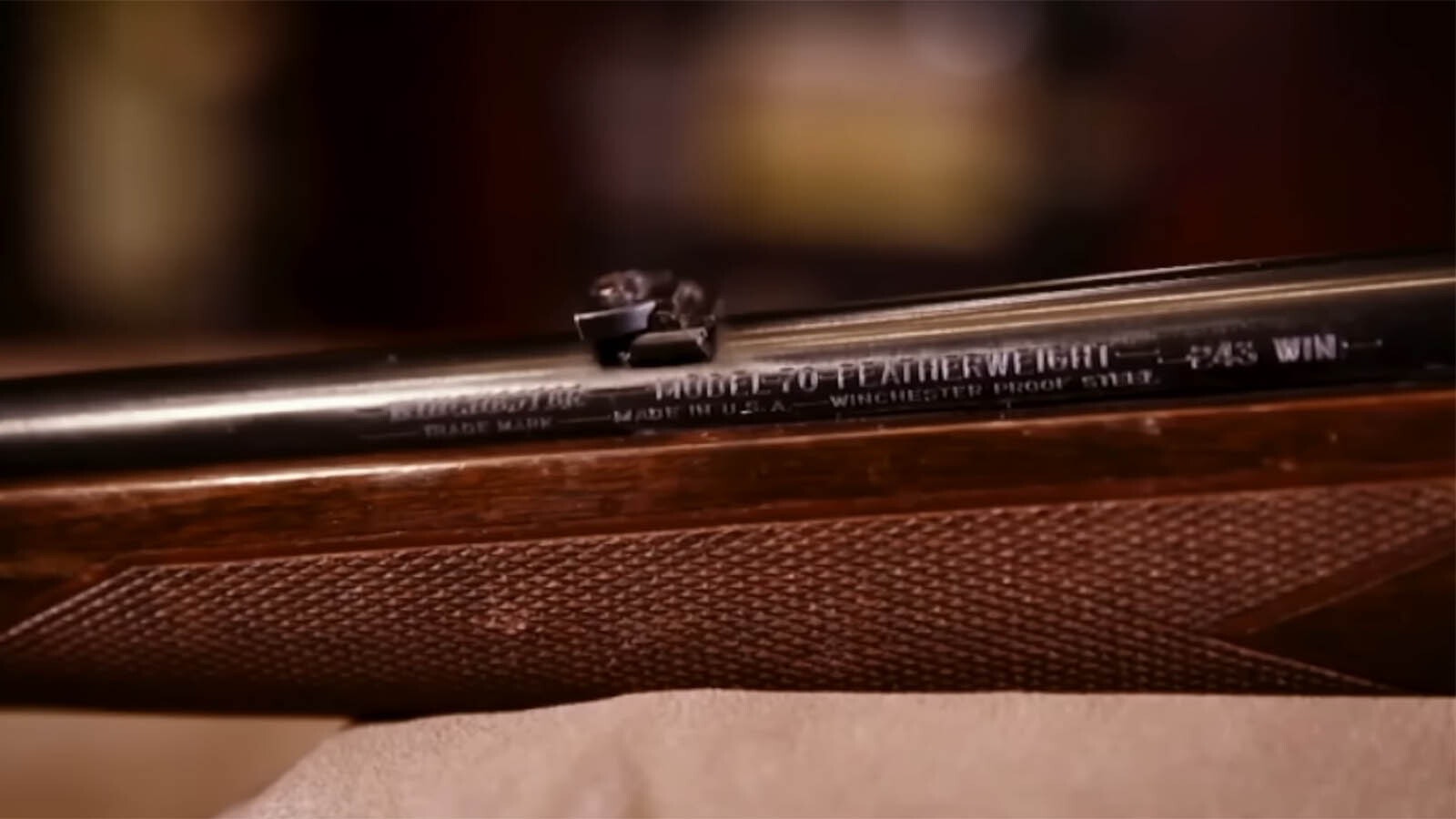To those outside of hunting and shooting sports culture, a pre-1964 Winchester Model 70 might seem like just another basic rifle.
But think of how car fanatics might regard a 1967 Shelby Mustang or hardcore musicians might react to a vintage Stratocaster. Then you might glean some idea of why the eyes of hunters and shooters light up at the mere mention of a “pre-’64.”
“They are a tremendous, tremendous gun. They are accurate, they are beautifully put together. They are an heirloom that can be passed from generation to generation,” Scott Weber, owner of Gunrunner Firearms & Auctions in Cody, told Cowboy State Daily.
“I’ve sold thousands of Model 70s,” he added.
An Everyman’s Rifle For Tough Times
Winchester introduced the Model 70 in 1936 during the Great Depression. It’s a bolt-action sporting rifle based off of the company’s earlier Model 54, which in turn borrowed heavily from the legendary German Mauser 98 design.
“When Winchester introduced them during the Depression, they had to be very, very well made” to convince hunters to spend their hard-earned money on the rifles, Weber said.
The original Model 70s sold for about $49 – which back then would have been about two months’ wages, he said.
As a premium firearm, it had to rest on a reputation for accuracy, durability and reliability. And it lived up to that reputation, Weber said.
“It was dubbed ‘the rifleman’s rifle.’ There can be no greater compliment made to a rifle than that,” he said.
Winchester began offering the Model 70 in an array of designs and calibers. Ranging from varmint rounds like the .22 Hornet all the way up to walloping African safari cartridges such as the .458 Winchester Magnum.
For the most discriminating customers, Winchester offered the “Super Grade,” with extra care going into to design of the hardwood stock and other amenities.
The Model 70 soon proved itself adept at putting venison on working-class tables across the country. Adventure hunters with more spare time and money packed larger-caliber models to Africa and dropped trophy-sized elephants, cape buffalo and other dangerous game.
“Then it was taken to Alaska and earned its reputation taking down huge brown bears, polar bears and walrus,” Weber said.
‘Smoked The Crow At 1,500 Yards’
Winchester recruited top-notch crack shot Herb Parsons as its exhibition shooter, and he traveled the country giving demonstrations of the Model 70’s accuracy.
There are more finely tuned rifles available today. But for its time, the Winchester Model 70 produced unparalleled out-of-the-box accuracy because the company’s gunsmiths put extra time and care into crafting the rifles’ barrels, Weber said.
Model 70s could regularly produce 1-inch shot groups at 100 yards without any special alterations, he said. A 1-inch group means all the shots hit the same area on the target only an inch or less apart.
Growing up, Weber was good friends with Parson’s son and recalled a story about just how deadly the Model 70 could be in the hands of the elder Parson.
As the story goes, Parson was giving a demonstration with a Model 70 chambered in .270 Winchester to a crowd of about 5,000 at a fairground when a crow landed about 1,500 yards away.
“He raised the .270 and fired, and smoked the crow at 1,500 yards,” Weber said.
O’Connor Made The .270 Iconic
Before World War II, Winchester Model 70s came equipped with peep sights, not magnified-power rifle scopes. After the war, the rifles came from the factory drilled and tapped to accept mounts for scopes, and at that time sold for about $125, Weber said.
Overwhelmingly, the most popular calibers for Model 70s were .30-06 Springfield and .270 Winchester.
The popularity of the .270 can be credited to Jack O’Connor, Weber said. O’Connor (1902-1978) was a legendary hunter and outdoor writer.
Once he started taking Model 70 chambered in .270 out into the field, he gave them rave reviews for their long-range accuracy. So, his fan base began snatching up Model 70 .270s of their own.
The popularity of the .30-06 cartridge was a result of the war, Weber said. Some of the American troop’s best infantry weapons – such as M1 Garand rifles and Browning 1919 machine guns – where chambered for .30-06.
“When the G.I.s came back from World War II, the .30-06 had done so much for them” so it was a natural choice for their hunting rifles, he said.
Both the .270 and .30-06 remain tremendously popular big game hunting cartridges in Wyoming and across the West. And Winchester still offers Model 70s chambered for those and many other sporting cartridges, with price tags ranging from about $1,200 to $1,800.
What Happened In ’64?
With Winchester still manufacturing Model 70s, the rifle isn’t going anywhere any time soon. But what sets those made before 1964 apart?
It’s a matter of craftmanship rather than functional quality, Weber said.
“In late ’63 and early ’64, the bean counters took over at Winchester and they started to cheapen everything,” he said.
They went to stamped checkering on the gun stocks instead of hand checkering, he said. Plastic replaced metal in some components, and a lesser grade of bluing (protective coating) was used on the rifle’s actions and barrels.
None of that changed the basic function and accuracy of the Model 70s, Weber said.
“I have a 1965 Model 70, and I’ve killed every kind of game with that rifle,” he said.
But the downgrades in craftmanship angered many customers, and Model 70s made after 1964 don’t carry the same value as pre-’64s, he said.
Big Money
At gun shows and on the auction block, pre-’64 model 70s can fetch a handsome price, often many times more than what they originally sold for.
“The very low calibers, like .220 Swift and .22 Hornet, or the very high calibers, such as .375 H&H magnum and up” are especially coveted, Weber said.
A mint condition Super Grade pre-’64 Model 70 in one of those calibers might go for $9,000 or more, he said.
Other pre-‘64s that are worn form years in the field or have been altered might go for $1,000 to $2,000.
The most common alteration is on pre-World War II Model 70s that were drilled and tapped for after-market scope mounts, he said. Other rifles might have had after-market bluing applied to them, he said.
“About 90 % of the pre-’64 Model 70s have been altered in some way or are worn in some way,” Weber said. “And that’s too bad, but that’s just the way it is.”
Mark Heinz can be reached at mark@cowboystatedaily.com.












